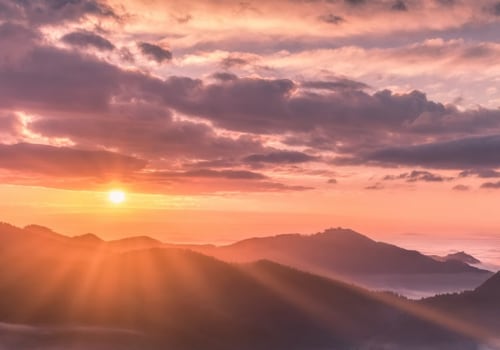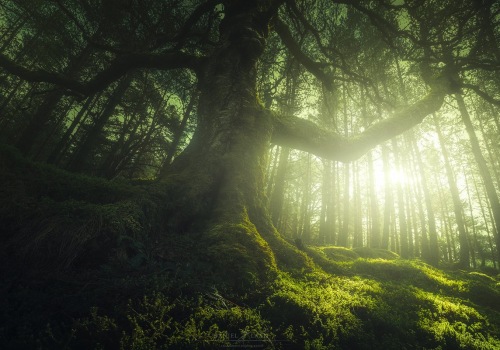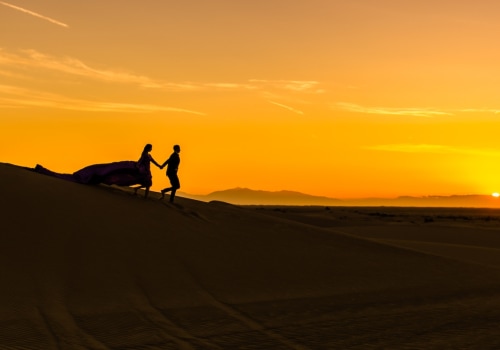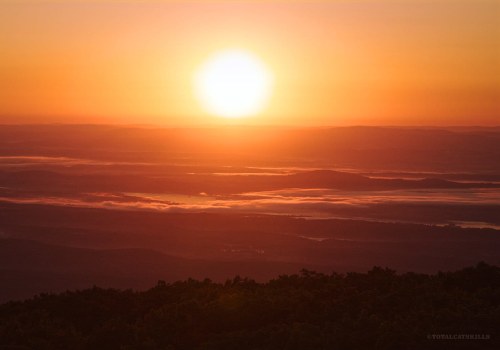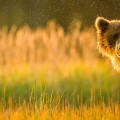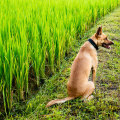Are you looking to add stunning mountain landscapes to your photography portfolio? If so, you're in luck! This article will provide you with a plethora of captivating photos and creative inspiration to help you find the perfect mountain landscape ideas for your project. From capturing breathtaking sunsets to shooting snow-capped peaks, we'll show you how to capture the beauty of the mountains like a pro. So, let's get started!
Creating Dramatic Effects
Light and shadow are essential elements of any good mountain landscape photograph. By using light and shadow to create contrast and depth, you can transform a scene from ordinary to extraordinary.You can also use the shadows created by the mountain peaks to draw the eye to certain features of the landscape. Additionally, a well-timed sunset or sunrise can add a beautiful golden glow to the scene. Long exposure shots are a great way to create misty, dreamy effects in mountain photography. Long exposures tend to blur out moving elements like clouds and rivers, creating an ethereal atmosphere. To get the best results, you should use a tripod and a neutral density filter to reduce the amount of light entering the lens. Wide-angle lenses are a great way to capture the vastness of a mountain landscape and create a sense of scale.
When shooting with wide-angle lenses, make sure that you include foreground elements in the scene to give the viewer a sense of depth. This will also help create a connection between the viewer and the scene.
Finding Photogenic Mountain Landscapes
When it comes to capturing stunning mountain landscapes, it's important to research potential locations before shooting. Scouting out a location beforehand can help you to find picturesque mountain landscapes and ensure that you're prepared for whatever the environment may bring. When researching a potential shooting location, it's important to consider the time of year and the type of terrain.Different seasons can provide different perspectives, with winter offering a stark contrast of snow-covered peaks, while summer may be better suited for capturing lush, vibrant vegetation. Additionally, it's important to think about the type of terrain you'll be shooting in. Are you looking for rolling hills or dramatic, jagged peaks? Will you be capturing an open landscape or one with more intimate details? Answering these questions can help you to narrow down your search and find the perfect mountain landscape. Once you've identified a few potential locations, it's time to go scouting.
Pay close attention to the light and weather conditions, as this can have a major impact on how your photos turn out. Look for unique details that could add interest to your shots and try to spot any potential obstacles that might hinder your photography. If possible, try to visit the location multiple times at different times of day and in different weather conditions to get a better feel for what you'll be working with. By doing your research and scouting out potential shooting locations beforehand, you'll be able to find photogenic mountain landscapes that will inspire breathtaking photos.
The beauty of nature is all around us, so take some time to explore and let creativity be your guide.
Using the Right Equipment
Equipment is an essential part of capturing stunning mountain landscape photos. While it's possible to take decent photos with a basic point-and-shoot camera, more advanced equipment will make it easier to capture the beauty of the landscape. A digital single-lens reflex (DSLR) camera is recommended for mountain photography, as these cameras offer more control over aperture, shutter speed, and ISO settings.Additionally, a DSLR can be paired with a variety of lenses, giving you more flexibility when creating your shots. A tripod is also essential for capturing crisp shots in low light conditions, as it prevents camera shake and allows you to experiment with different compositions. The type of tripod you select should be based on the weight of your camera, as heavier cameras will require a more robust tripod. When it comes to lenses, wide-angle lenses are best suited for mountain photography.
These lenses allow you to capture vast landscapes in one shot, and also give you more creative control over your shots. If you're looking for more telephoto options, consider using a telephoto or zoom lens. These lenses will allow you to capture details such as rock formations or wildlife in the distance. No matter what type of equipment you choose, understanding the basics of photography and getting to know your gear is key to creating beautiful mountain landscape photos. Mountain landscape photography is an art form that requires a combination of creativity, skill, and knowledge of the best techniques.
To get the most out of your mountain landscape photography, it's important to be prepared with the right equipment and the necessary skills to create dramatic effects. With practice and experimentation, you can learn to capture stunning images that showcase the beauty of nature’s mountain landscapes. We hope these tips have inspired you to start taking your own amazing mountain photos.

